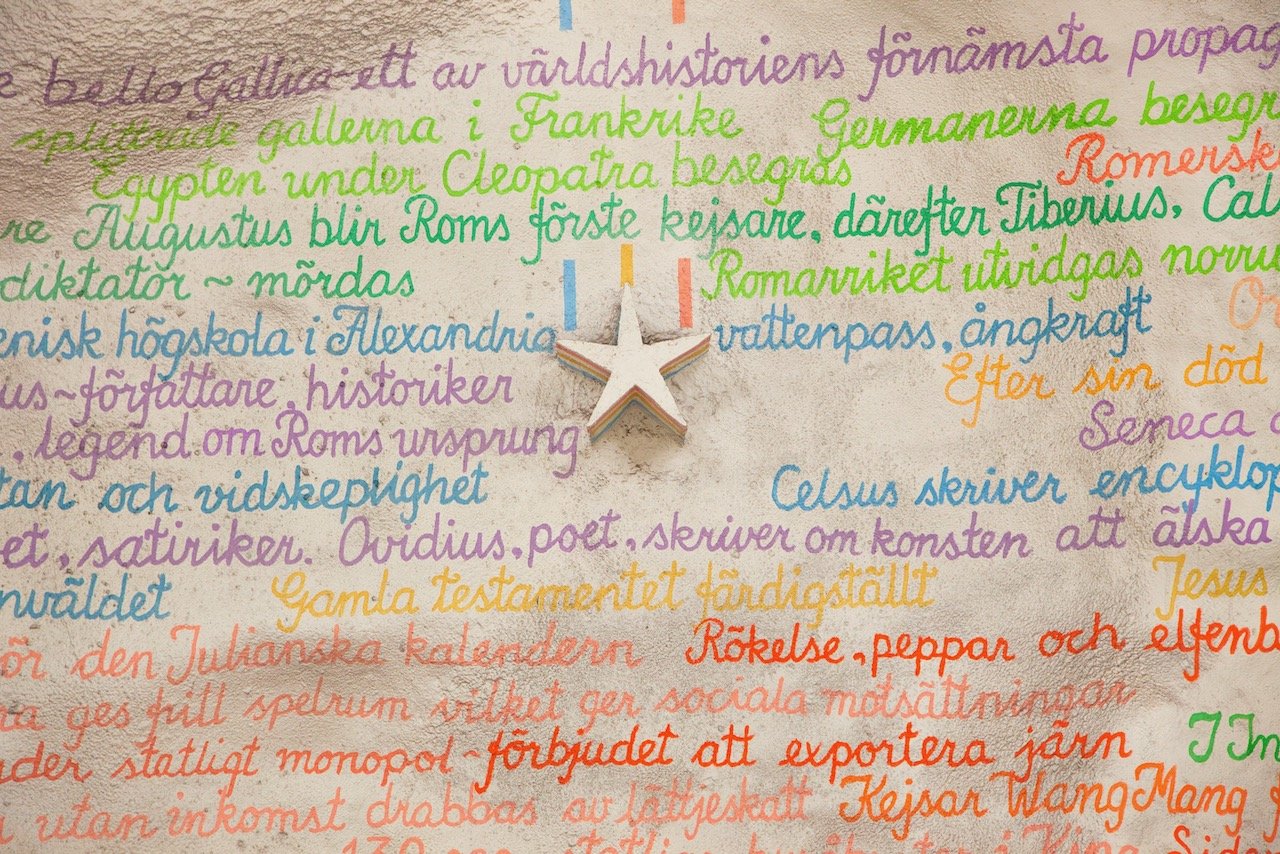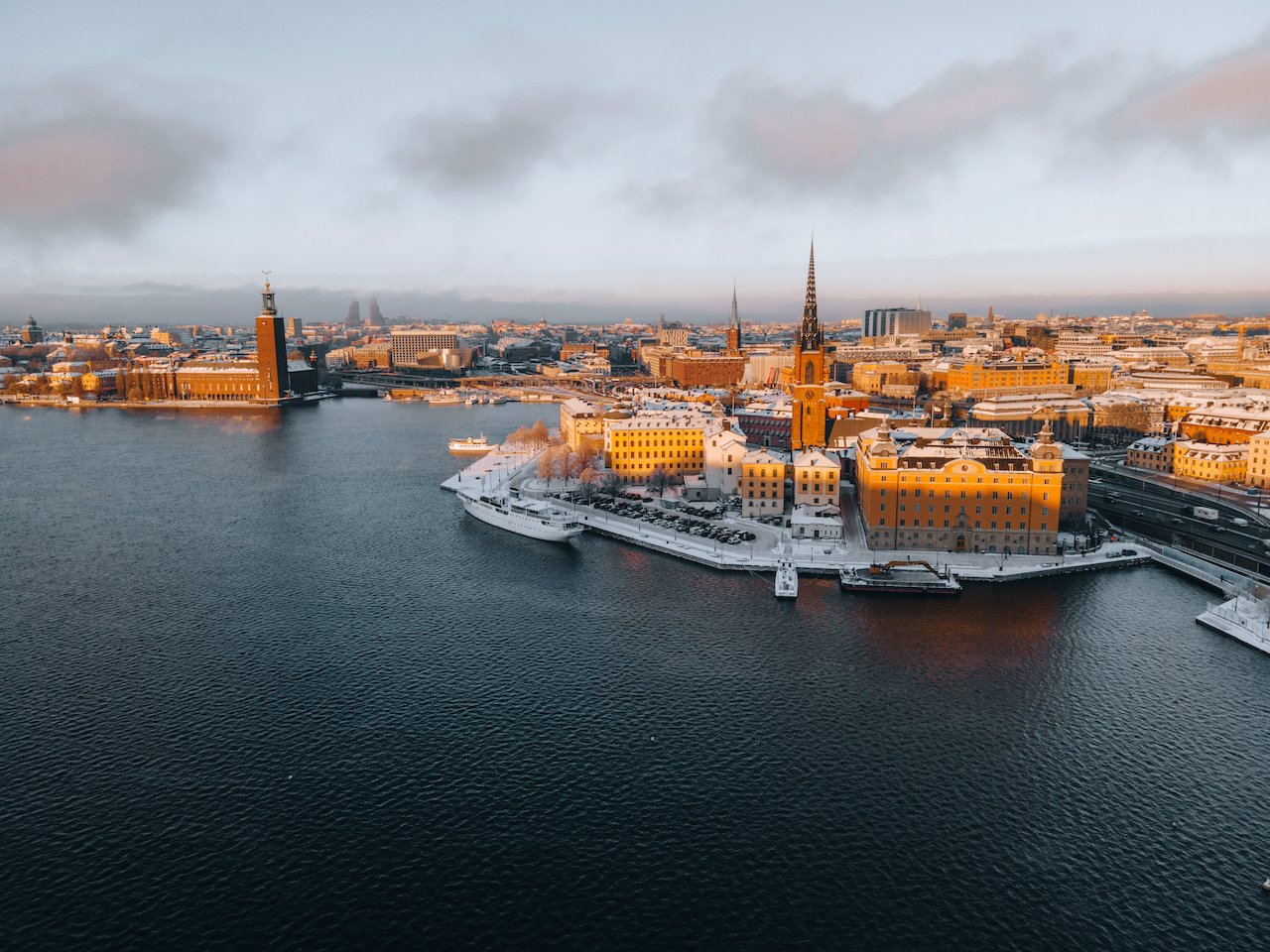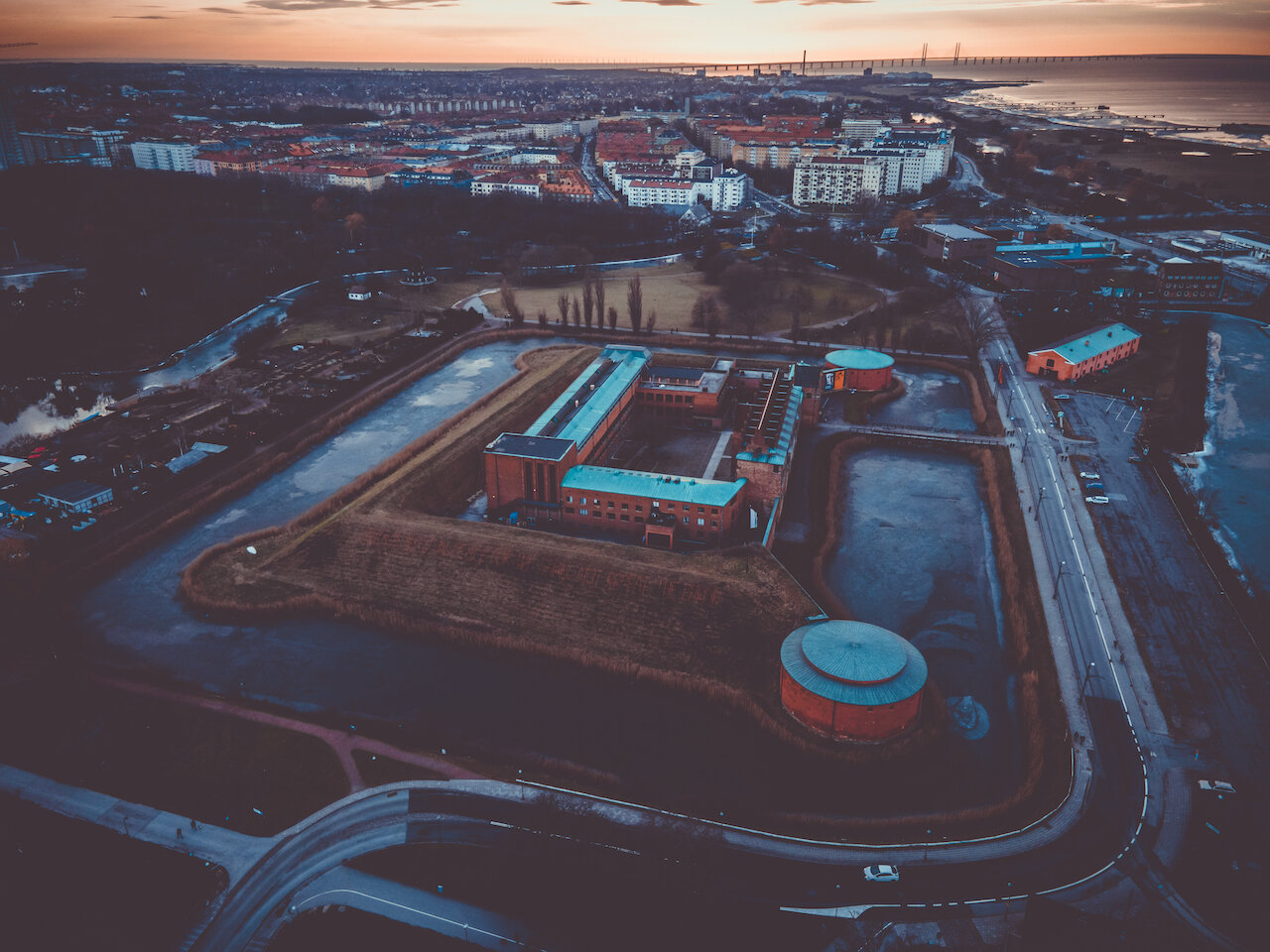The World’s Longest Art Gallery: Riding on the Stockholm Tunnelbana
(Some links in this post are affiliate links. If you click through and take action, I'll be compensated.) If you are also interested in any PRINTS from any of my posts, be sure to check out my store where you can buy prints as posters, in metal/wooden frames or on canvas.
It seems quite ununsual that one of the things people suggest you do in Stockholm is to simply ride the metro system. However, you will find that this is particularly the case, not just for this city but a few others in the world as well (Moscow, London, New York).
The Tunnelbana in Stockholm is considered the world’s longest art gallery, as many of the stations themselves feature works from [mostly] swedish artists.
Seeing as how the weather in Scandinavia often involves precipitation and gray skies, sometimes you want to find an activity to do that doesn’t require dealing with the weather.
When the weather IS cooperating and you want to see what Stockholm has to offer, (check out my post here on what to do and see in the Swedish capital) and check out my drone video below on Stockholm!
I have been truly unable to pick my favorite station to photograph since they are all so diverse and the messages behind the art are so unique. I can narrow them down to just a handful like Solna Centrum, Solna Strand, Stadion, Tekniska Högskolan, and Universitetet.
As far as getting around the Tunnelbana, it is pretty straightforward and the premise often follows how most other metro lines operate in the world. All you need to do is to find the name of the train line that you are on (‘T#) and ride towards the station in the direction you want to go. For example, if I am at T-Centralen (shown by the large ‘T’ in the map below) and I want to go to Solna Strand, just take the blue line T10 train towards ‘Hjulsta’ (the last station on the T10 blue line in that direction).
Here are just a few highlights from some of the Tunnelbana stations, broken down by each train line color:
Blue Line
Rådhuset
Translating to ‘The Court House’, this station sits near the City Hall and police headquarters of Stockholm. It is an example of organic architecture, as can be seen by the exposed bedrock by the escalators.
Solna Centrum
The artists Karl-Olov Björk and Anders Åberg wanted to convey a political statement with this mural. They had added small features to the green forest and red sunset landscape after its initial creation to highlight the important of the environment to Swedish culture.
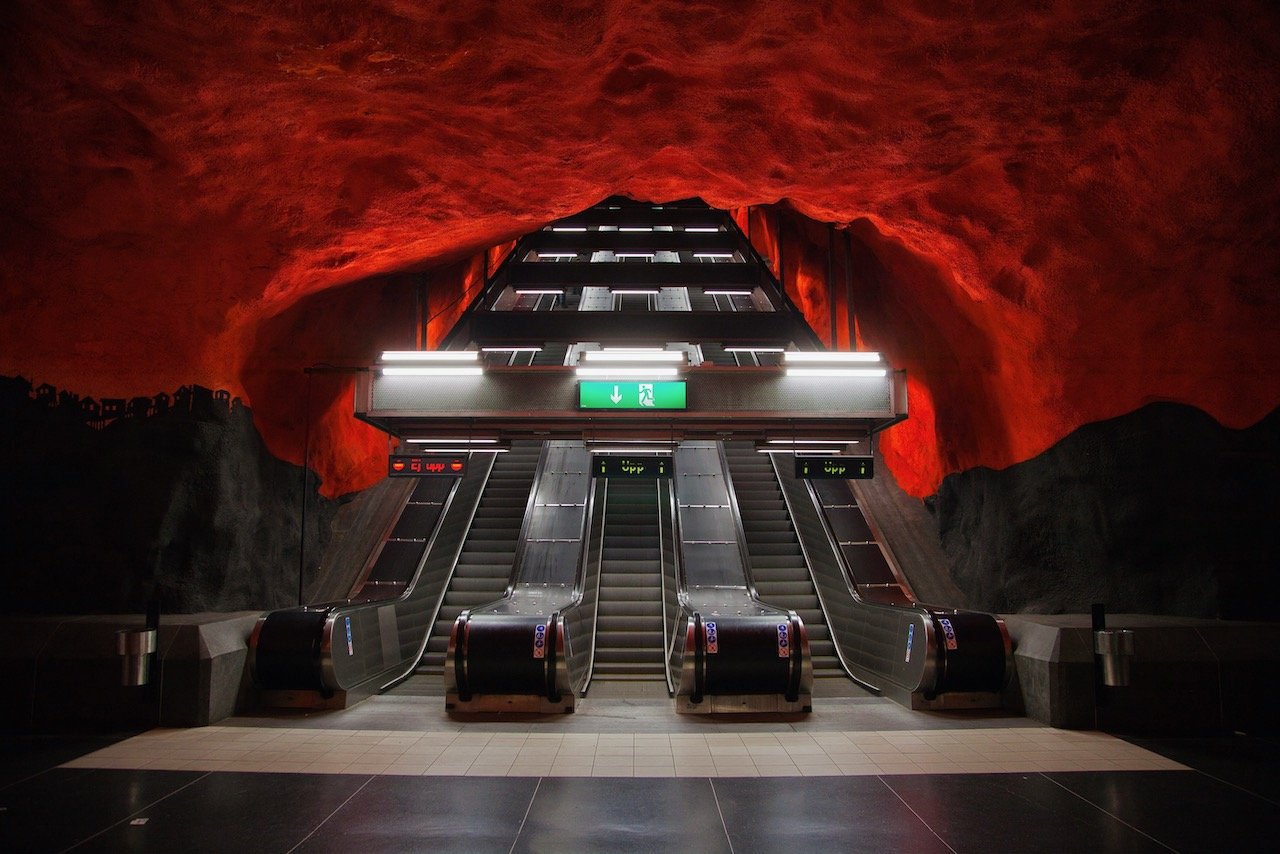
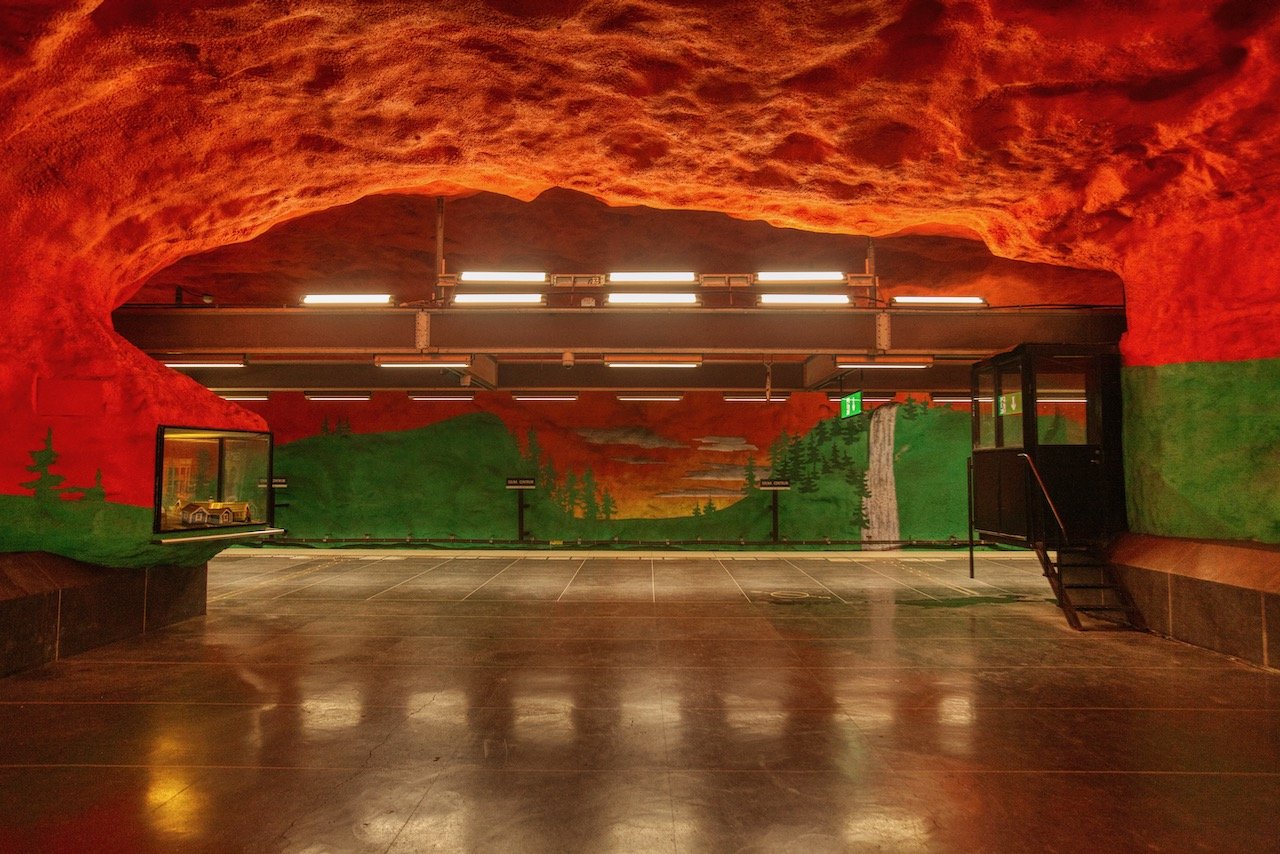
Hallonbergen
This station looks as though hundreds of children were given markets and told to run amoc and scribble all over the walls. Nonetheless, artists Elis Eriksson and Gösta Wallmark used inspiration and actual drawings from their childhoods to decorate this station.
Näckrosen
This station name translates to ‘water lily’, which is especially fitting when you look at the mural on the ceiling. Swedish painter, sculptor, and educator Lizzie Olsson-Arle used stones, bricks, texts and other pieces from the demolished Strindberg house near the station where Swedish playwright August Strindberg spend some time.
T-Centralen
The epicenter of the Stockholm Tunnelbana. This is the convergence of all the lines in the network and as such, imparts panic and chaos for some of the riders. Therefore, the artist Per Olof Ultvedt painted T-Centralen blue to give a more calming influence to the ridership.
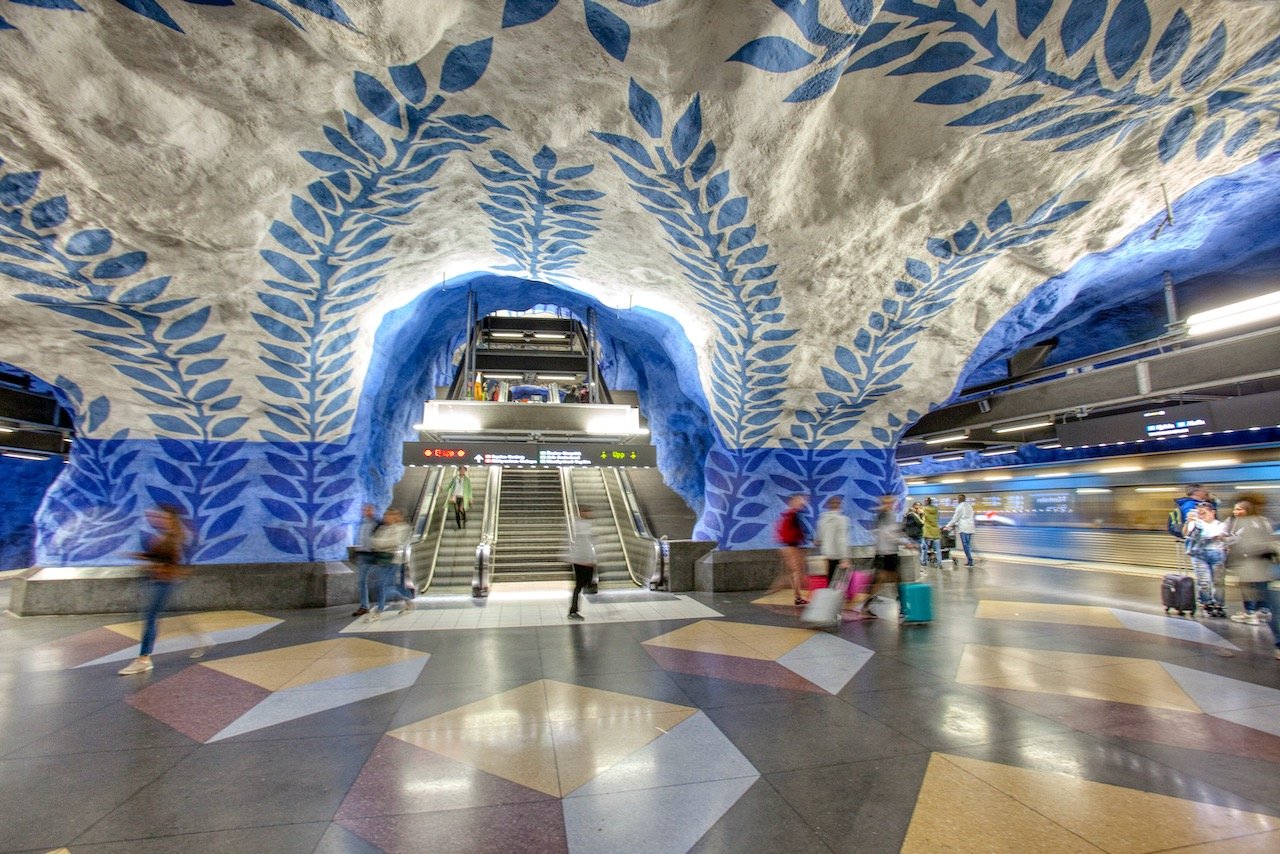
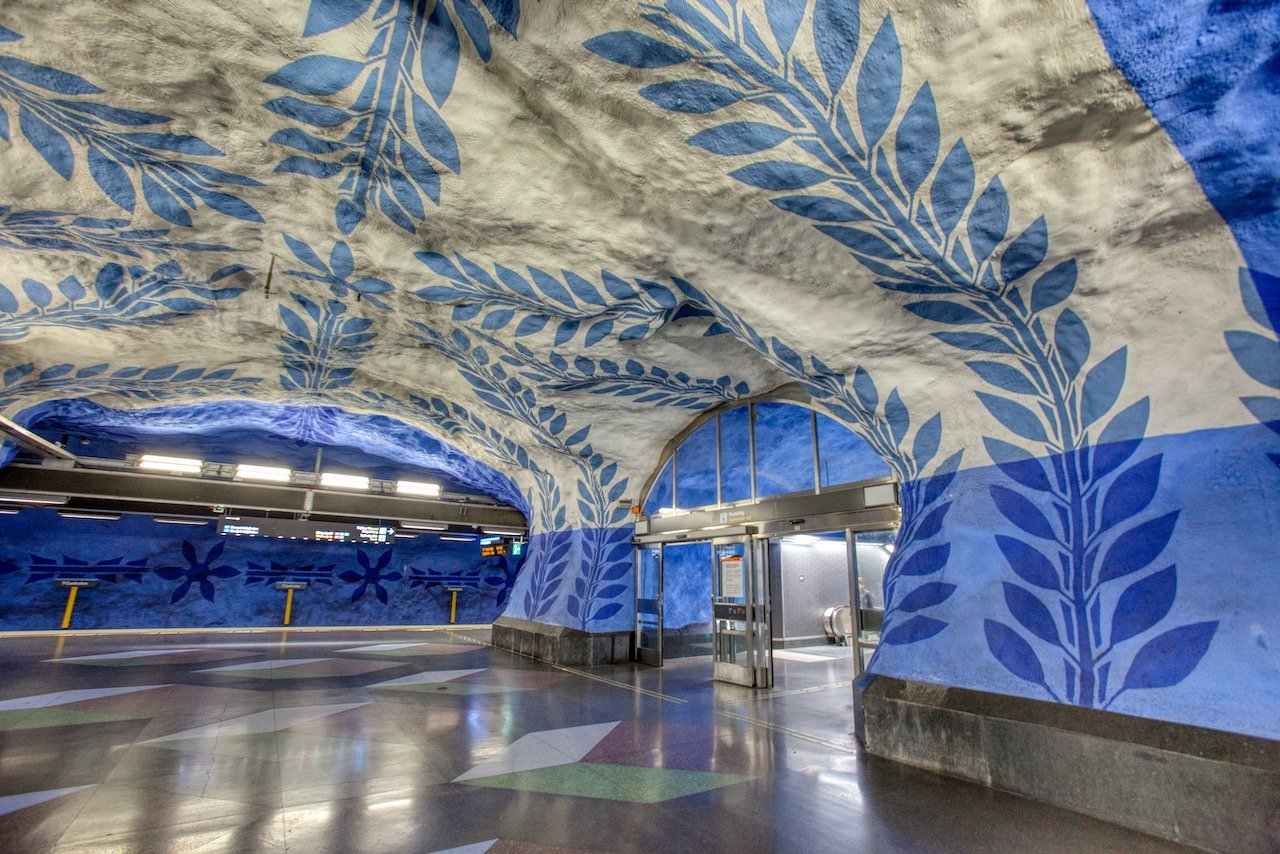
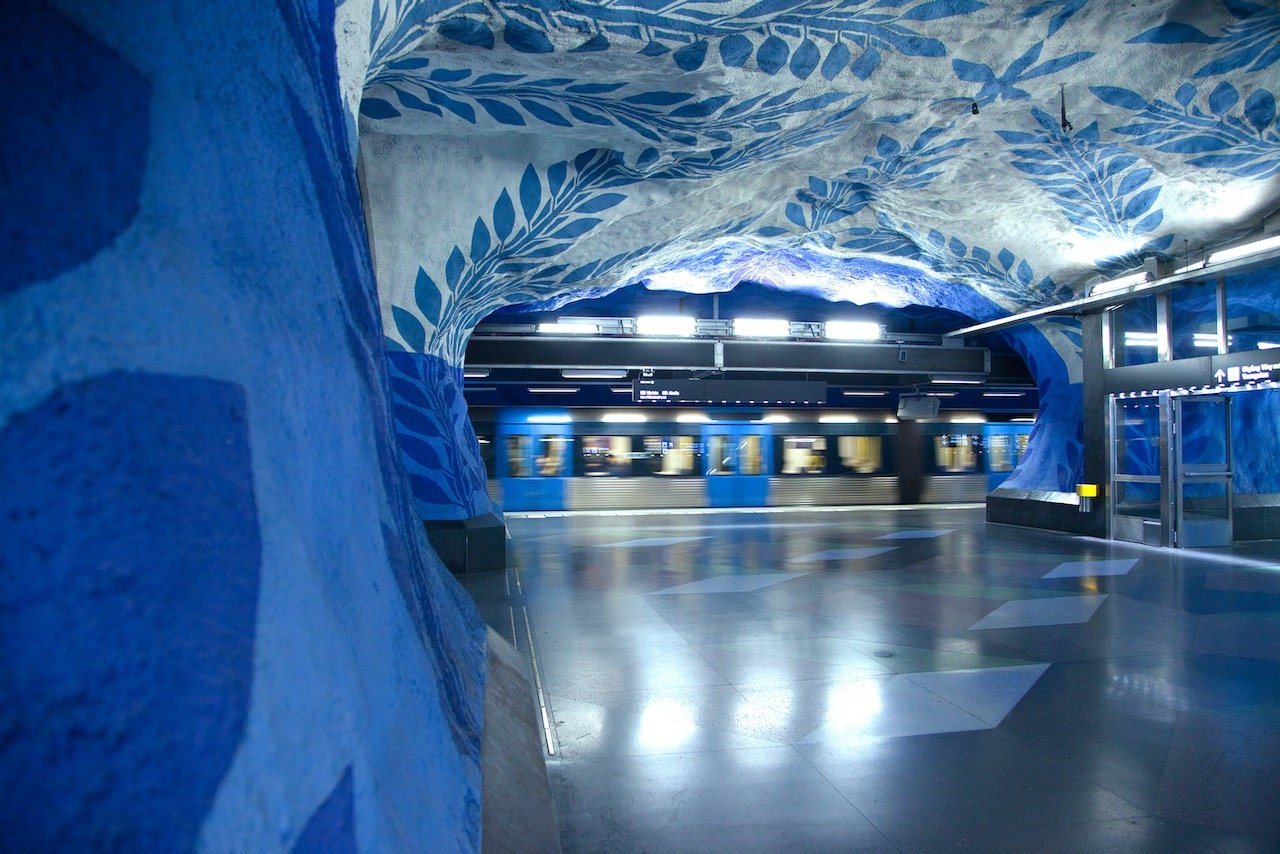
Tensta
This Stockholm suburb was built to ease the residential housing shortage of the swedish capital in the mid 20th century. The artist Helga Henschen, her brother Lars, and Arne Sedall collaborated together to create a space that is ‘a celebration of all the people from different cultures living in Tensta’, since a majority of the Tensta residents were immigrants. The station is adorned with colorful facades and sculptures of animals with various art pieces littered around the station.

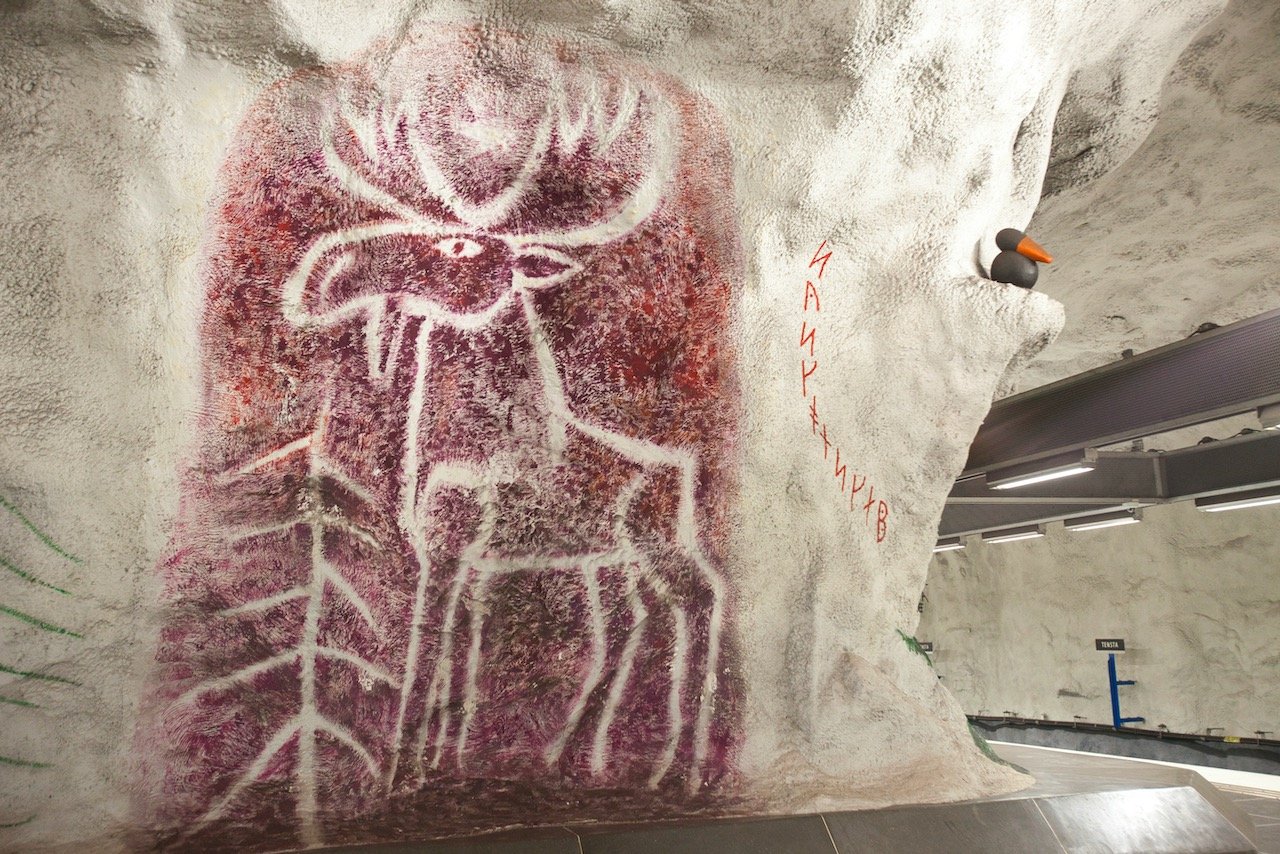
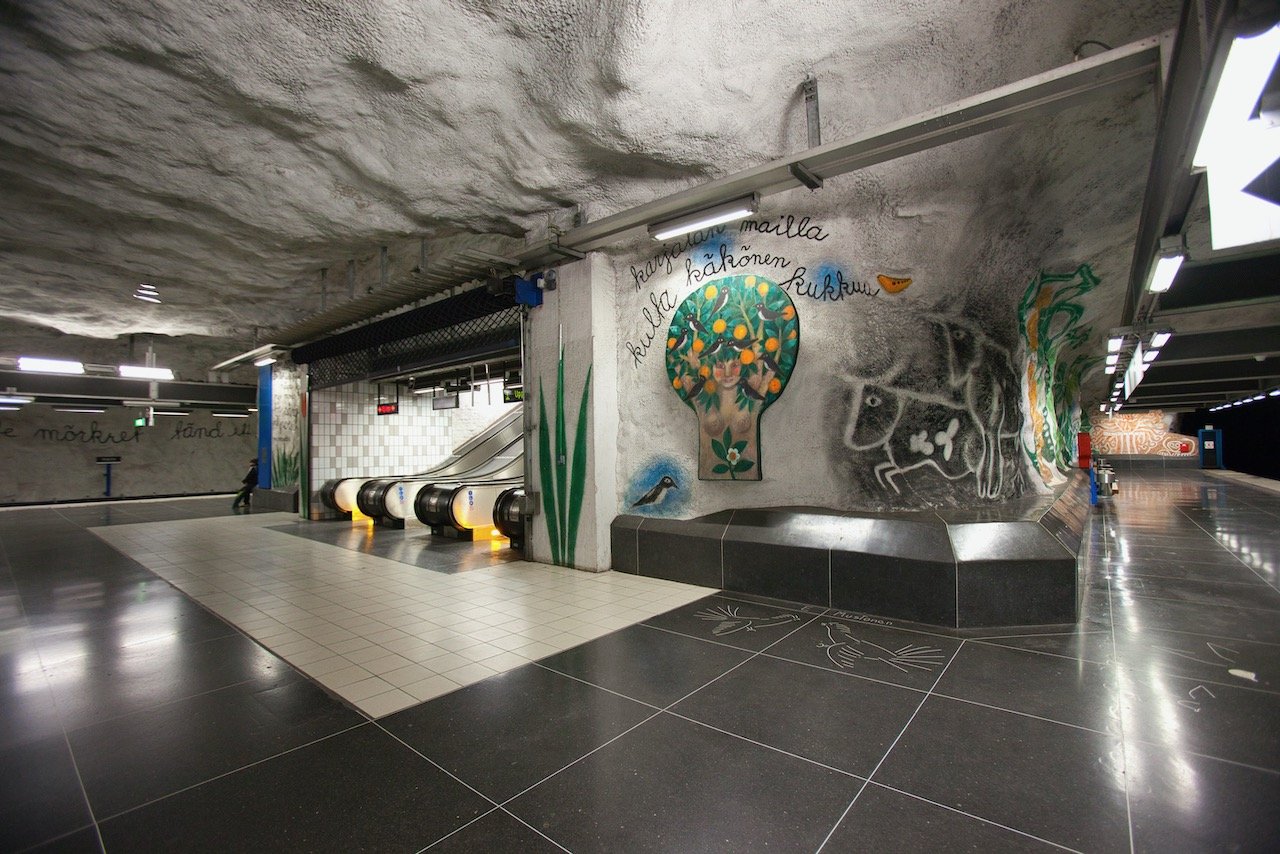
Rissne
The artists of this station (Madeleine Dranger and Rolf H. Reimers) used the platform wall space as a time axis, describing human history over the years. Each color represents a different area of history (Red - Life Events, Green - Politics, Pink - Culture, Blue - Technology, Yellow - Religion). If you take your time, you can read the entire course of human history in these areas up until recent years.
Sundbybergs Centrum
This station is composed of facades and sculptures by artists Lars Kleen, Michael Söderlundh, and Peter Tillberg.
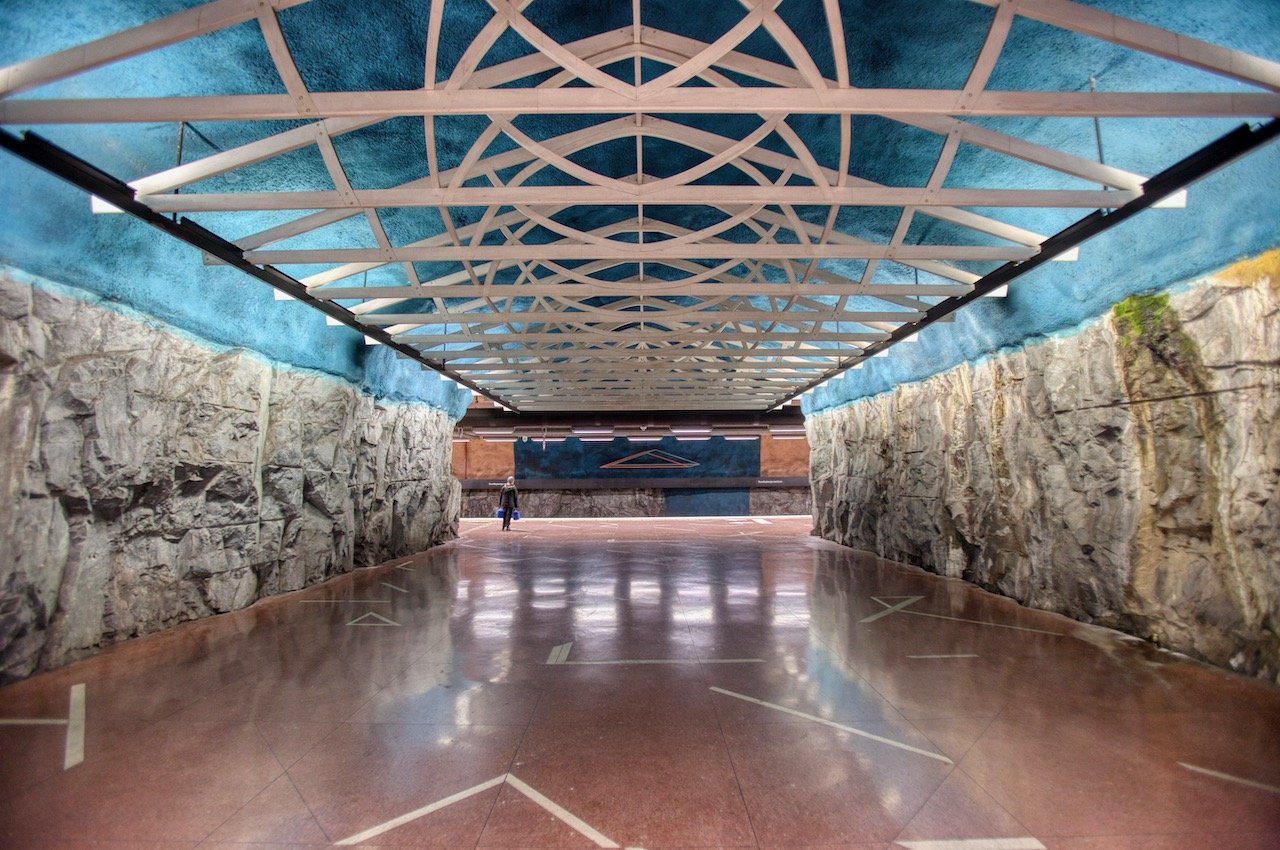
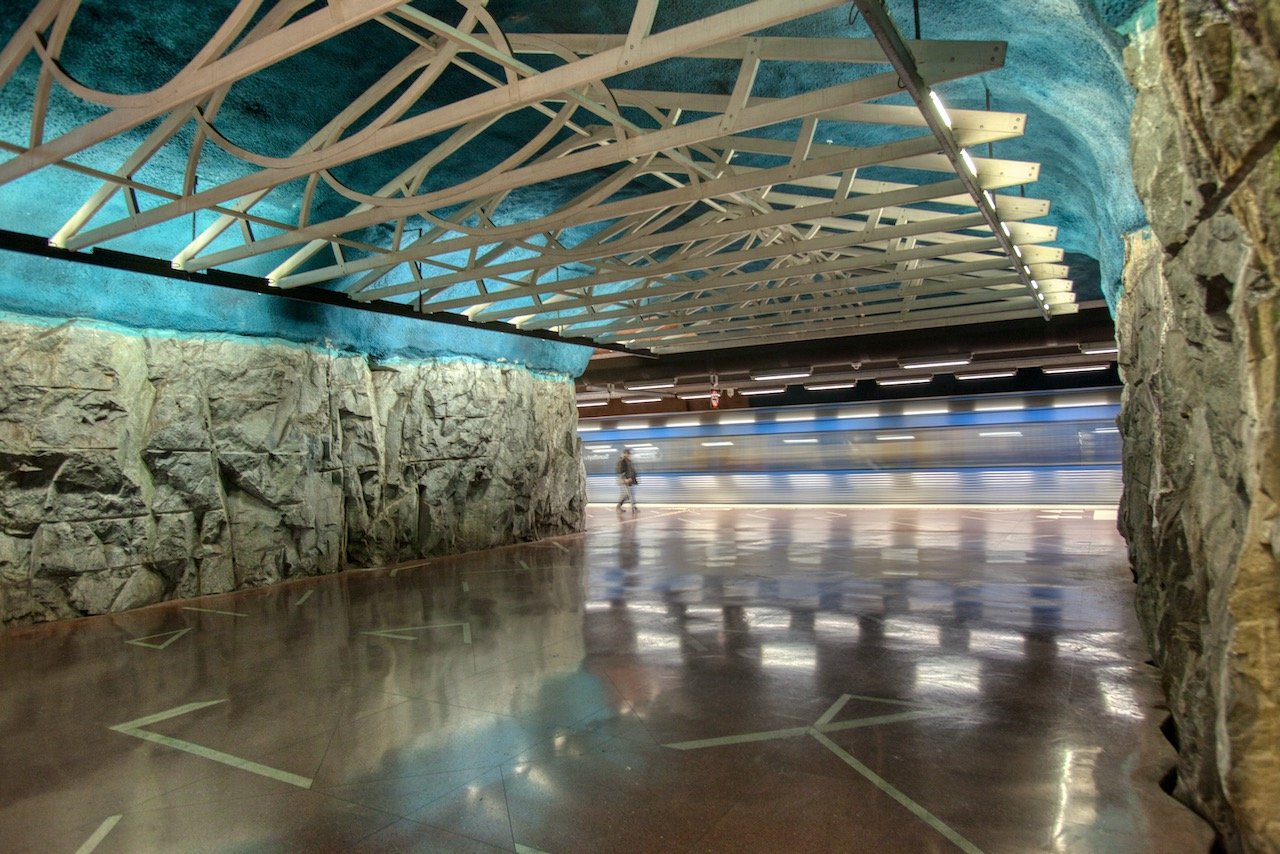
Solna Strand
This station represents a balance between light and darkness. Japanese artist Takashi Naraha often uses these opposing forces in his work. In my opinion, this is one of the more striking stations, as the blue, cool cubes have a calming influence in the otherwise lifeless cave.
Huvudsta
Located in Solna, this station features an installation by Per Holmberg (called “Hanging Gardens”) and the station entrance was designed by architect Yorgo Turac.
Västra Skogen
Literally translating to ‘Western Forest’, this station was designed by artist Sivert Lindblom. It features colorful arches and tiled facades that contrast with the otherwise lackluster rock interior.
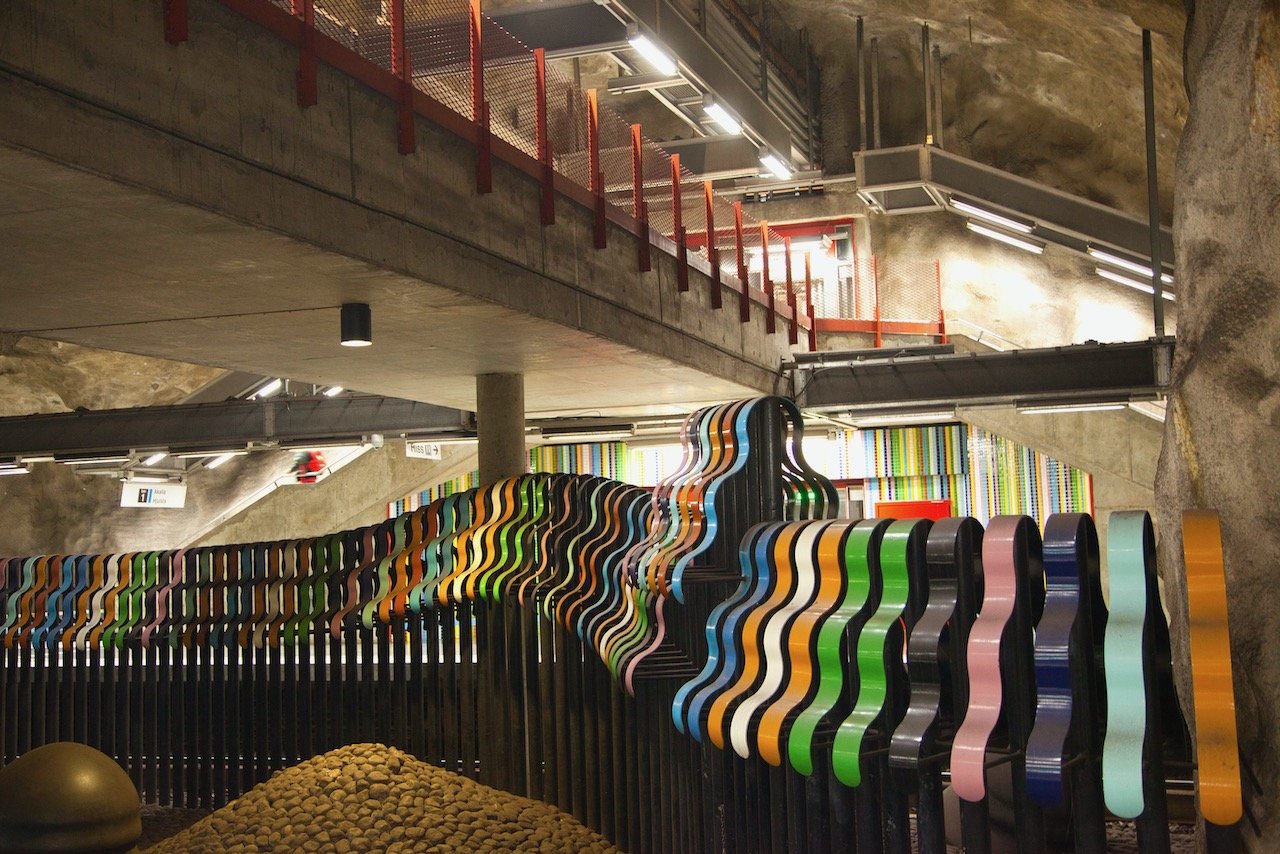
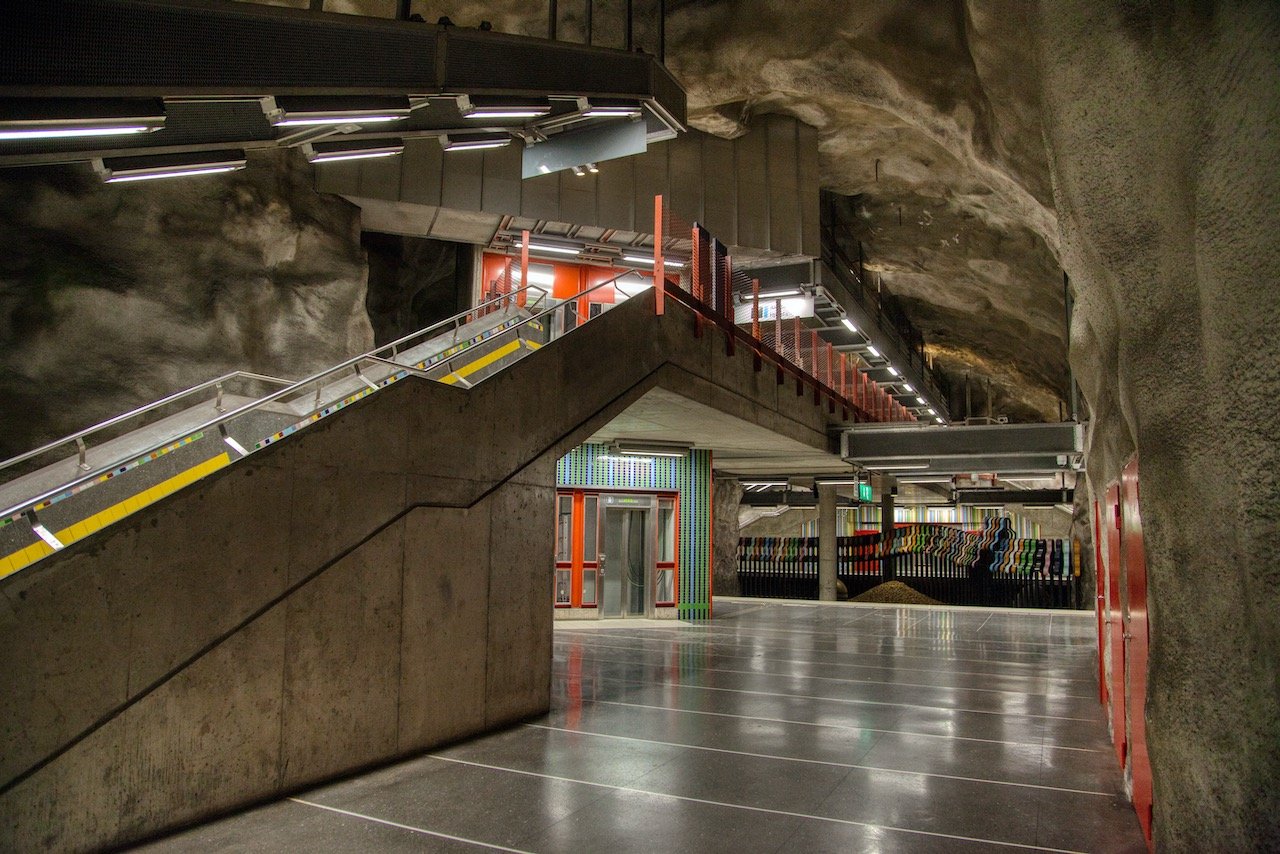
Akalla
The last station on the T11 line. On the way here from city center, you will feel like you’re in the Swedish countryside, while only being just a few miles from T-Centralen station. The soft yellow tones of this station make it very relaxing to walk around. There is also a collection of ceramic paintings made by artist Birgit Ståhl-Nyberg.
Kungsträdgården
The ‘King’s tree garden’ is decorated in many earthly tones, leaving you to imagine yourself on street level in a park space. Old sculptures cast from the 16th century amidst a sea of designs and other installations make this station one of the most heavily decorated in the entire Tunnelbana. The artist Ulrick Samuelson was inspired by some of the old and new buildings in this area, using relics from these buildings in the form of statues and other elements.
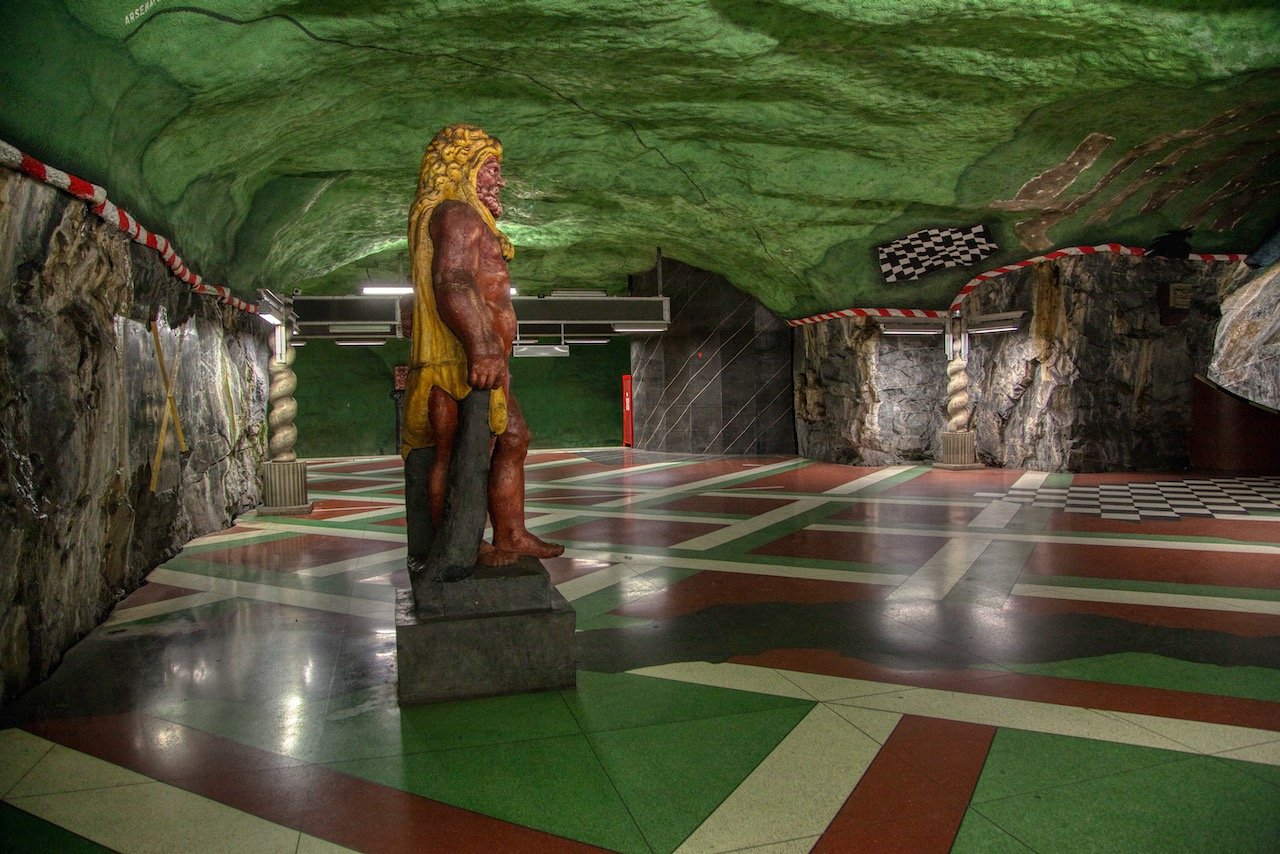
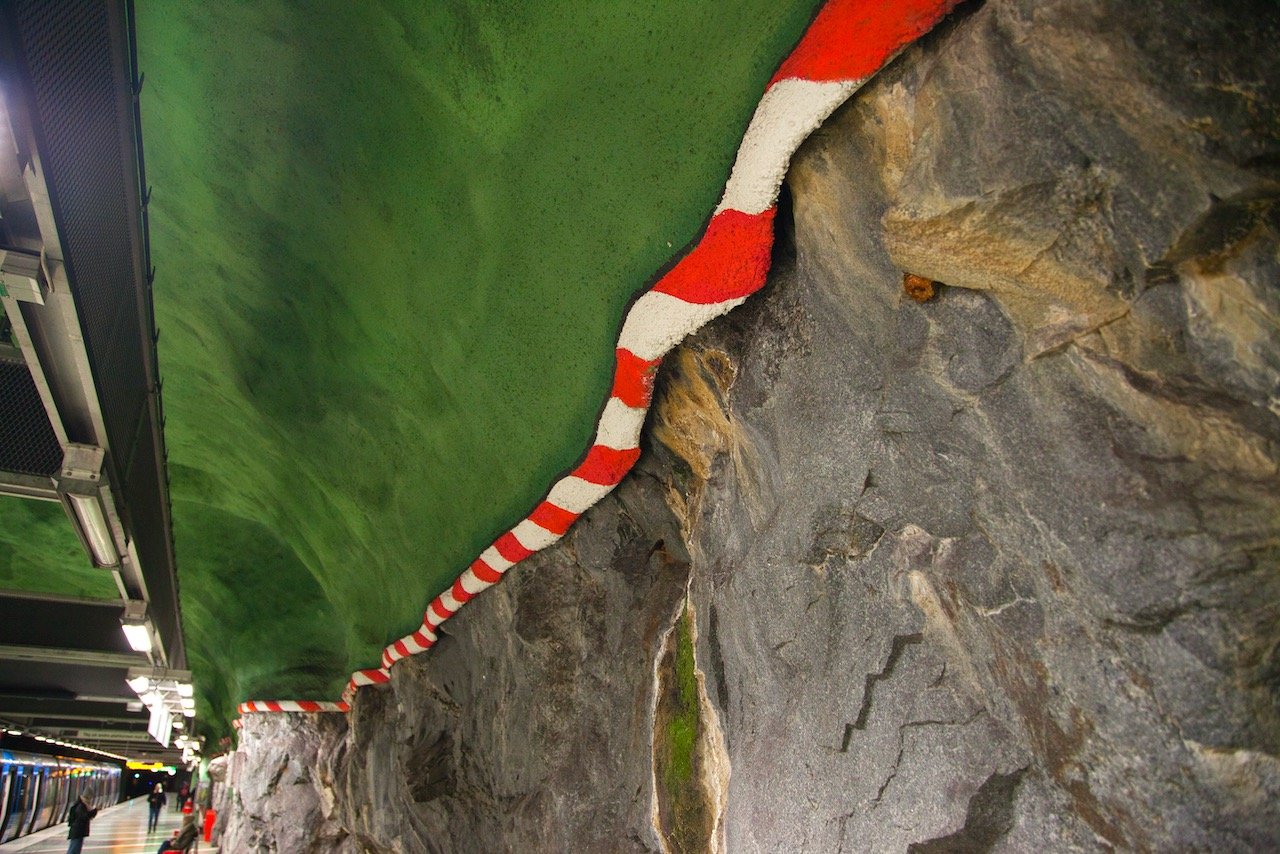
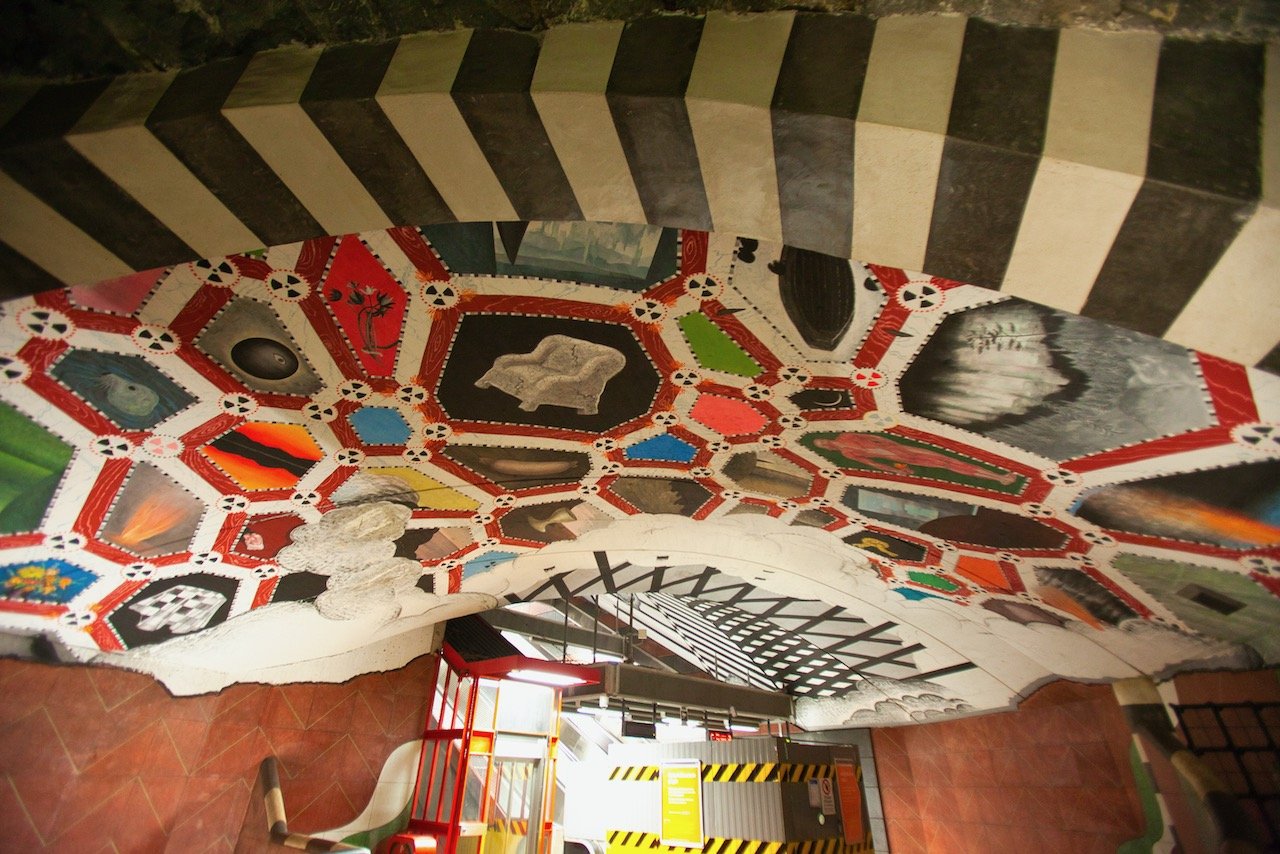
If you like some of my photos that you have come across, just know that I have many prints showcasing a variety of landscapes in Sweden, available for purchase below! (Sold as Posters, Canvas, or in Metal-Frames and Wooden-Frames).
Red Line
Tekniska Högskolan
This station, which directly accesses KTH Royal Institute of Technology, is inspired by artwork to highlight scientific discoveries and advances (artist Lennart Mörk). The polyhedra that is featured represents Plato’s five elements: fire, water, air, earth, and ether.
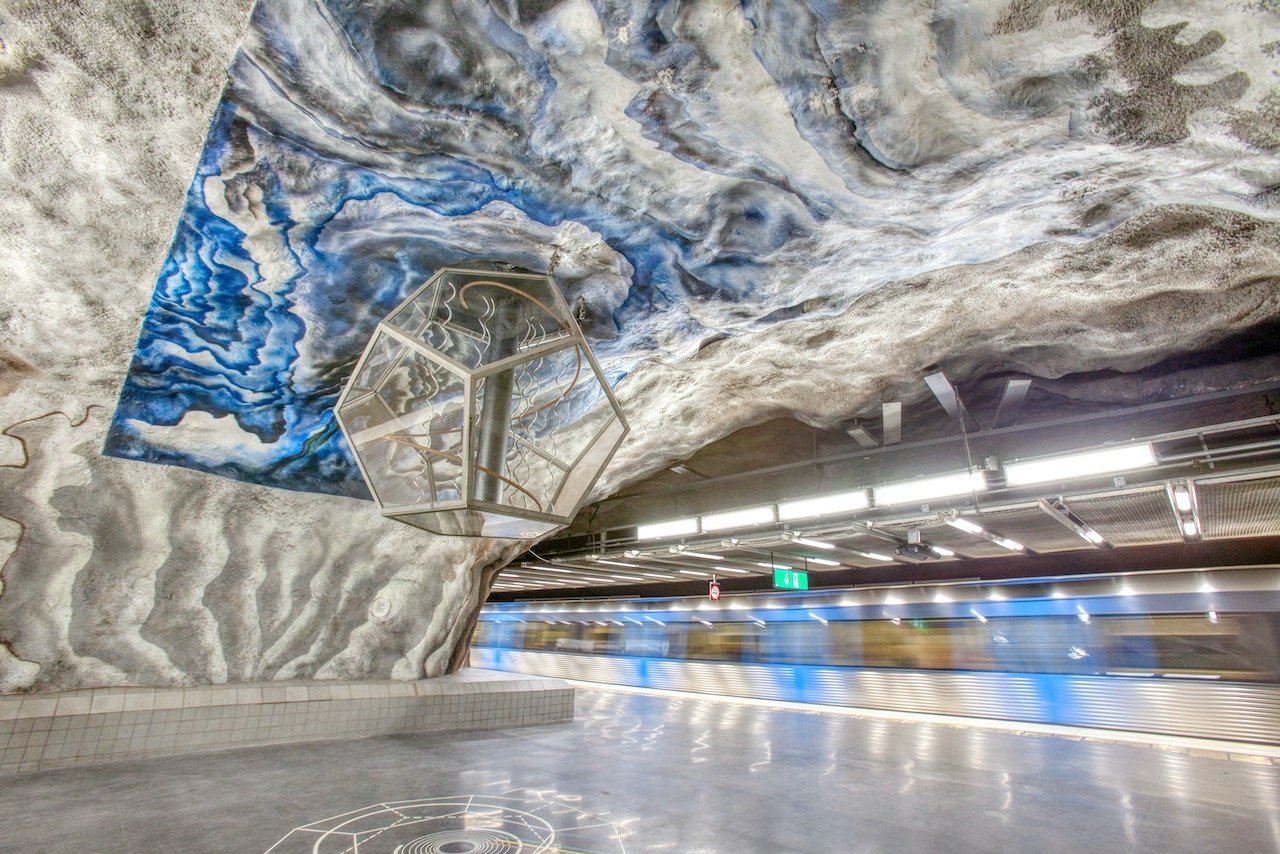
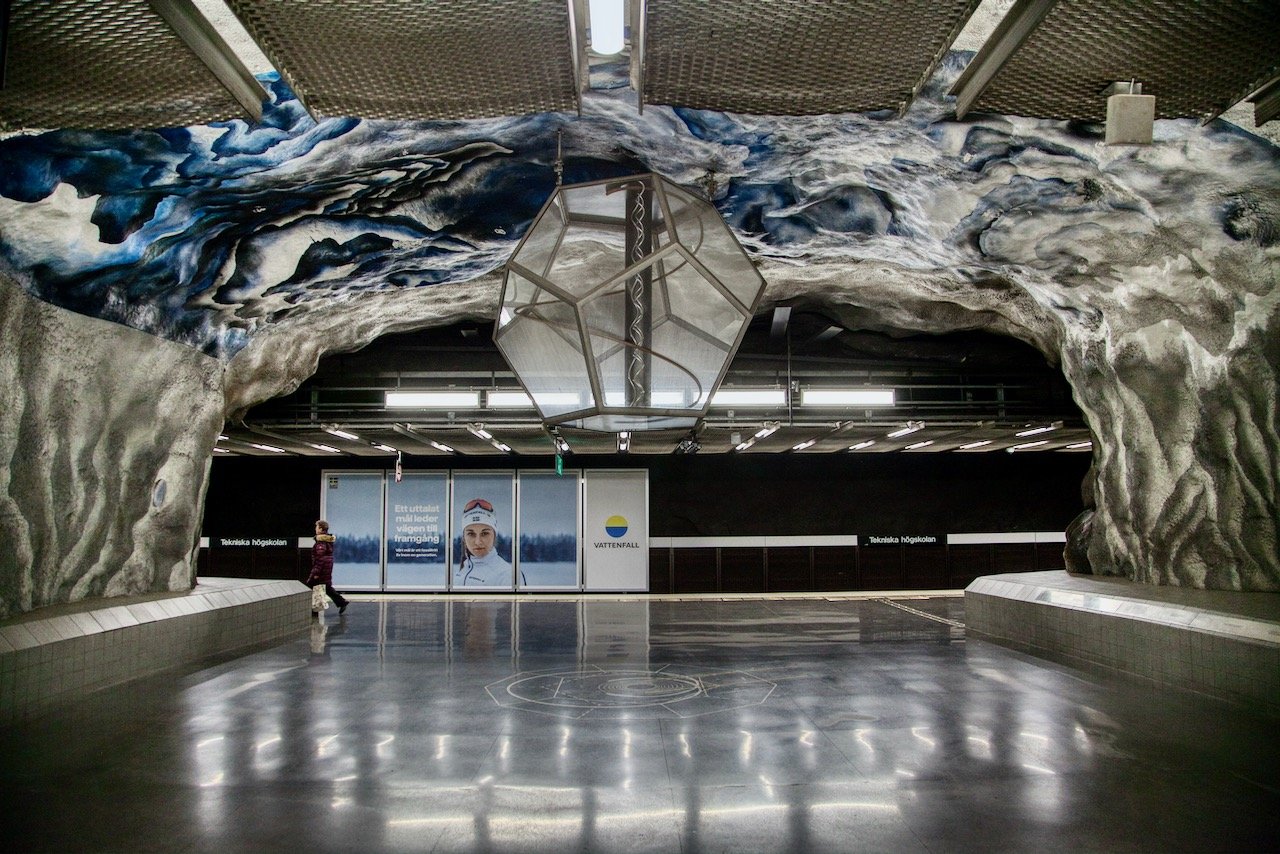

Stadion
This station is actually built from a cave so artists Åke Pallarp and Enno Hallek wanted to paint the ceiling bright blue fitted with a rainbow to create an atmosphere that didn’t feel like a cave. It’s named due to it’s close proximity to the Stockholm Olympic Stadium.
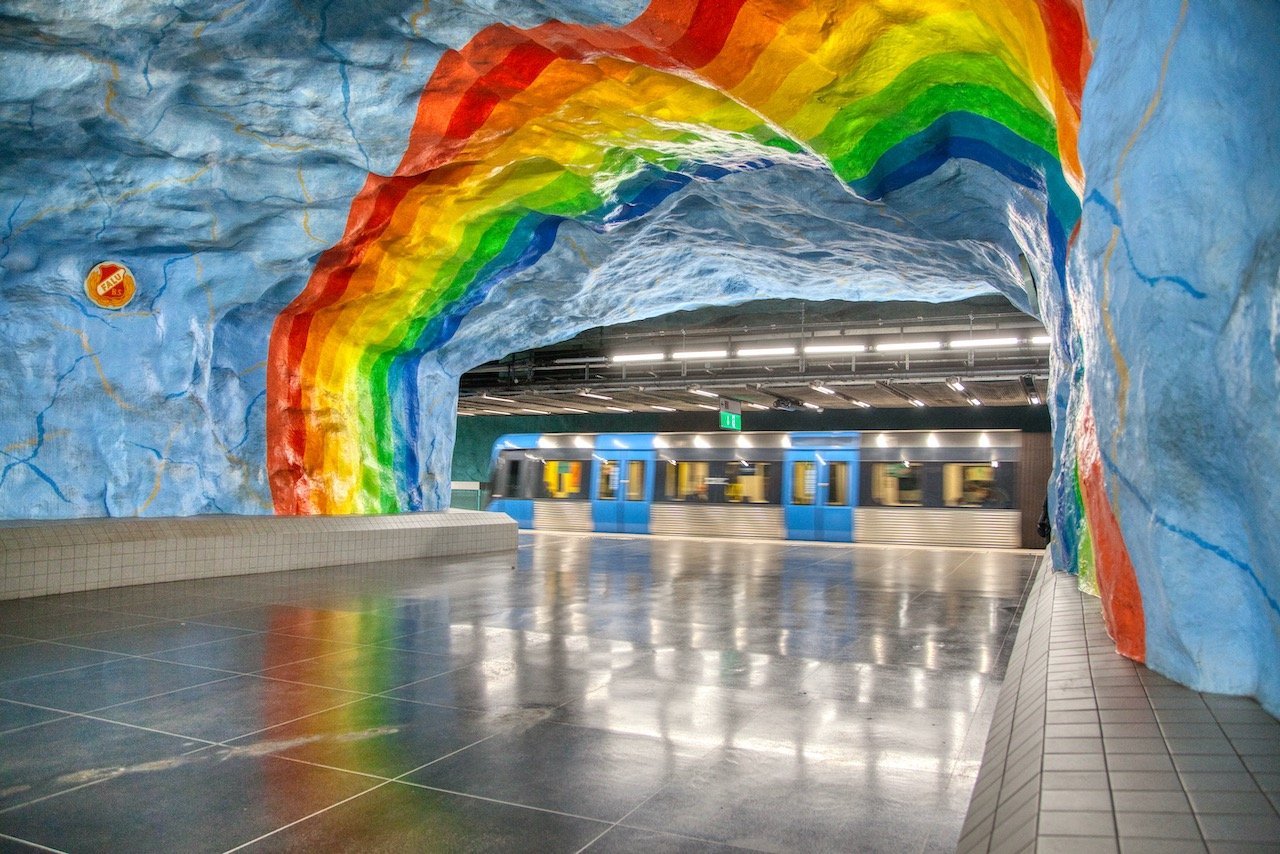
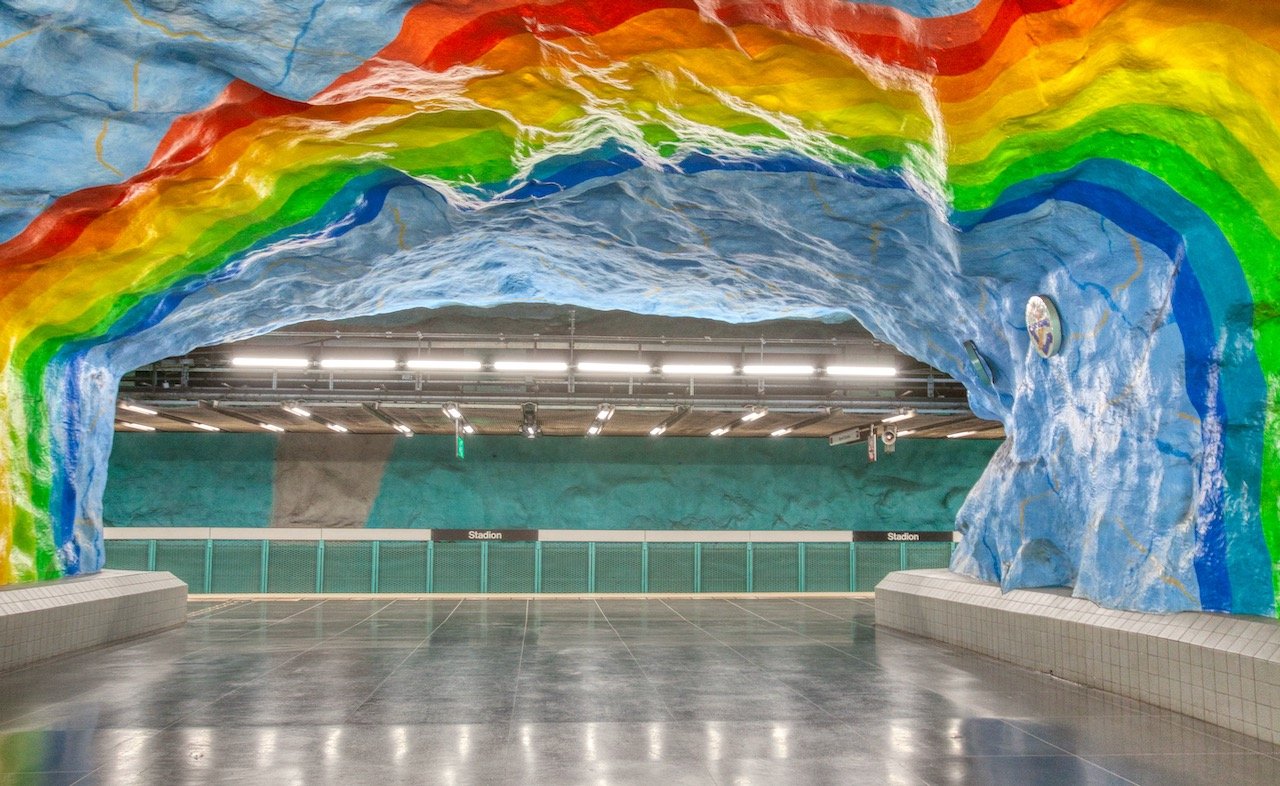
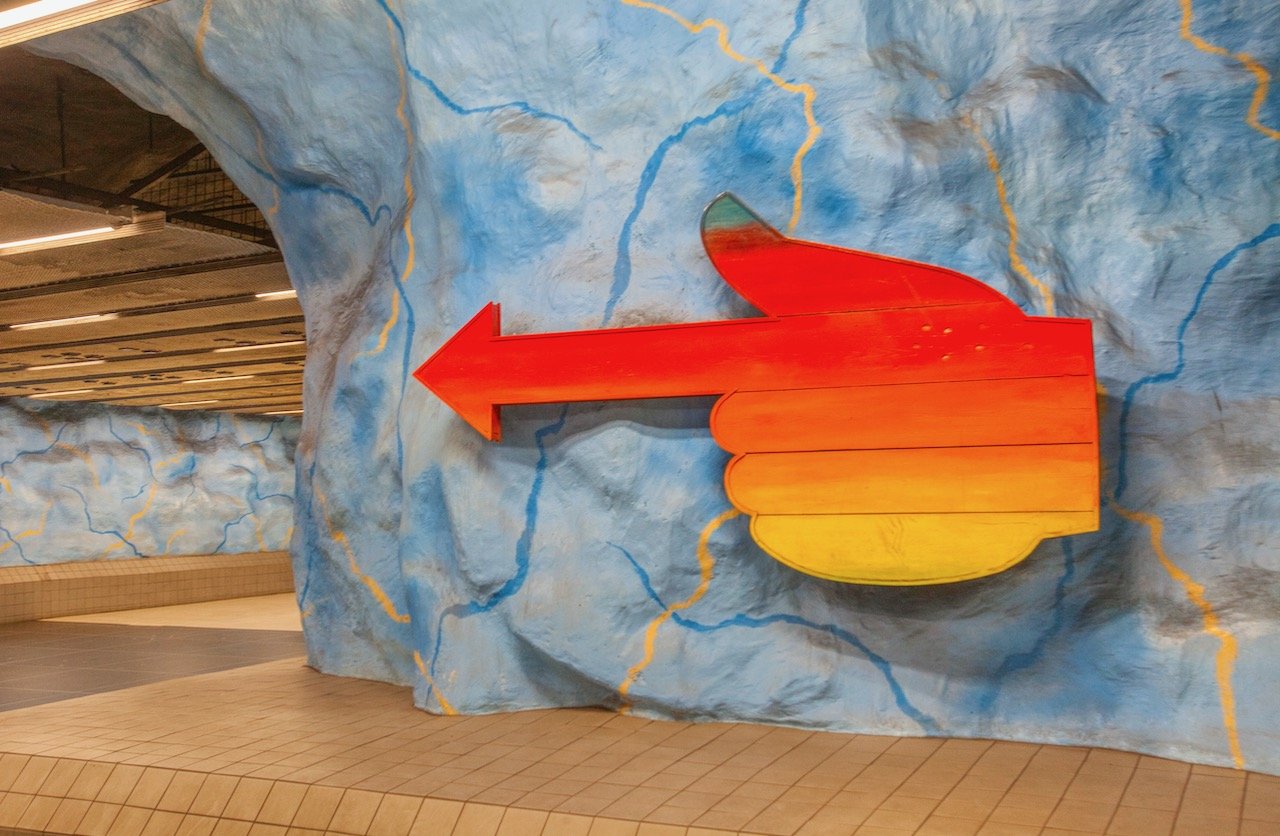
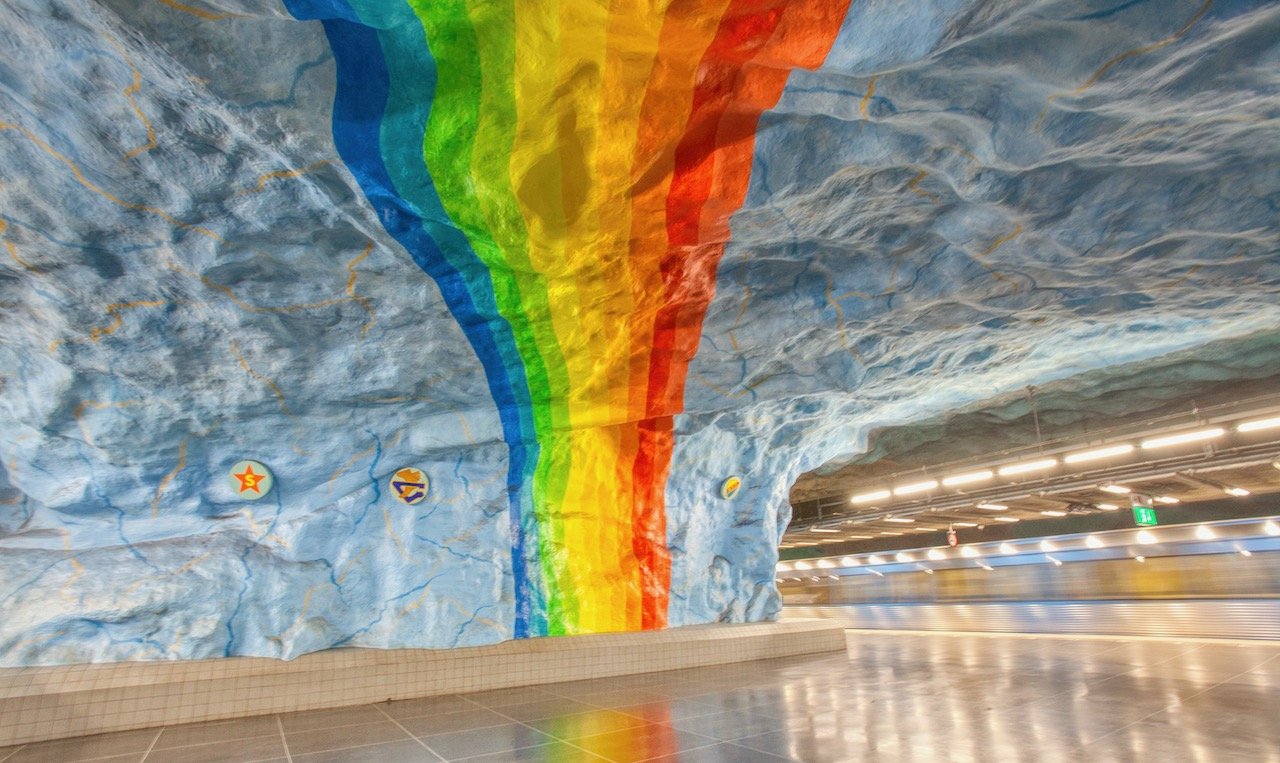

Universitetet
Architect David Helldén utilized ceramic tiles for artistic decoration of the emergency exit leading to the ultimately unfinished, and therefore closed, north exit of the station. Other installations are peppered throughout the station on tiles illustrating themes by the United Nations and the travels of Carl Linnaeus (by Françoise Shein).
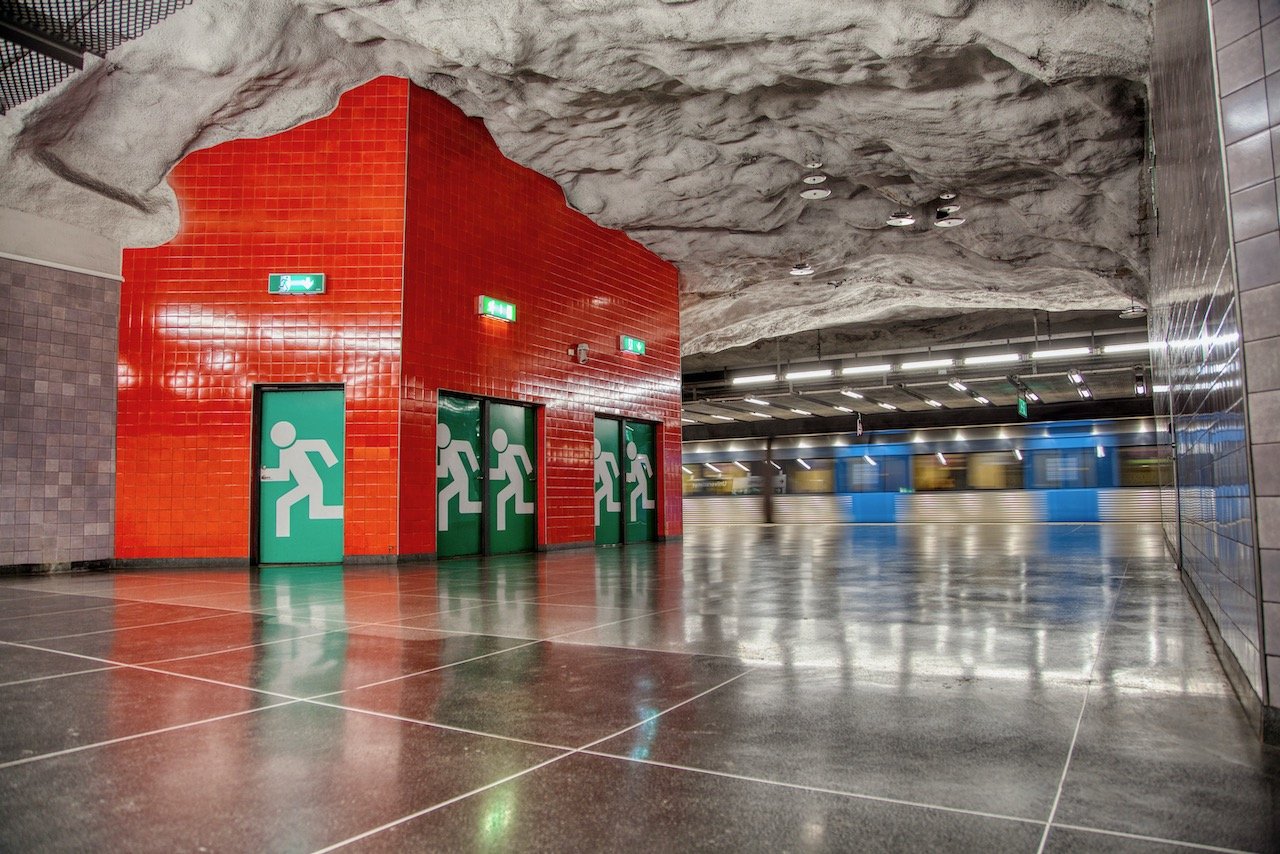

Mörby Centrum
This last stop on the red line and is brightly painted on the ceiling. The tiles shown are painted in such a way as to change color depending on where you’re standing in the station. The artists Gösta Wessel and Karin Ek wanted this to signify the ever changing landscapes and one’s journey from start to finish.
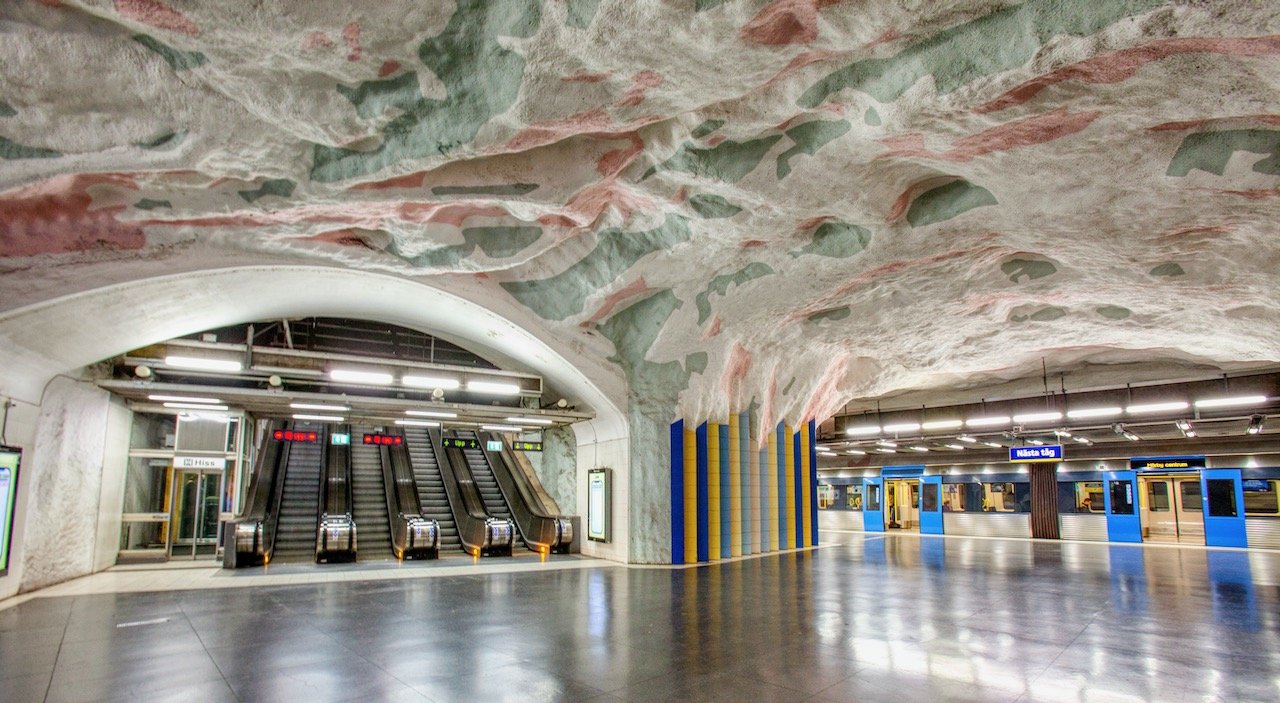
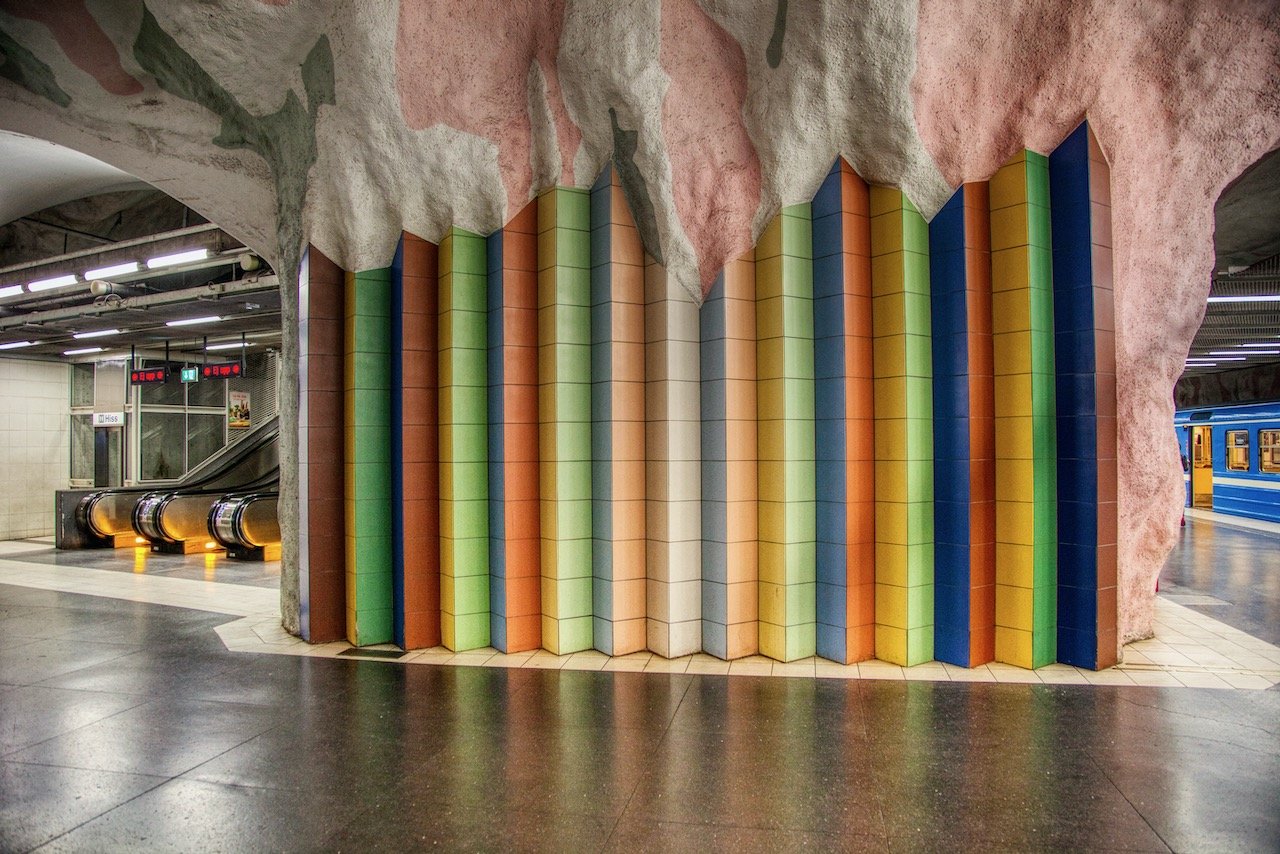
Green Line
Thorilsplan
This station is one of three that is at ground level. The artist Lars Arrehenius was given full artistic freedom to design the station with the caveat that all artwork had to be tiled. The area around Thorilsplan reminded him of video games, so the decoration took the form of what can be called ‘8-bit aesthetics’. This type of artwork can be seen in the breadth of Lars’ works.
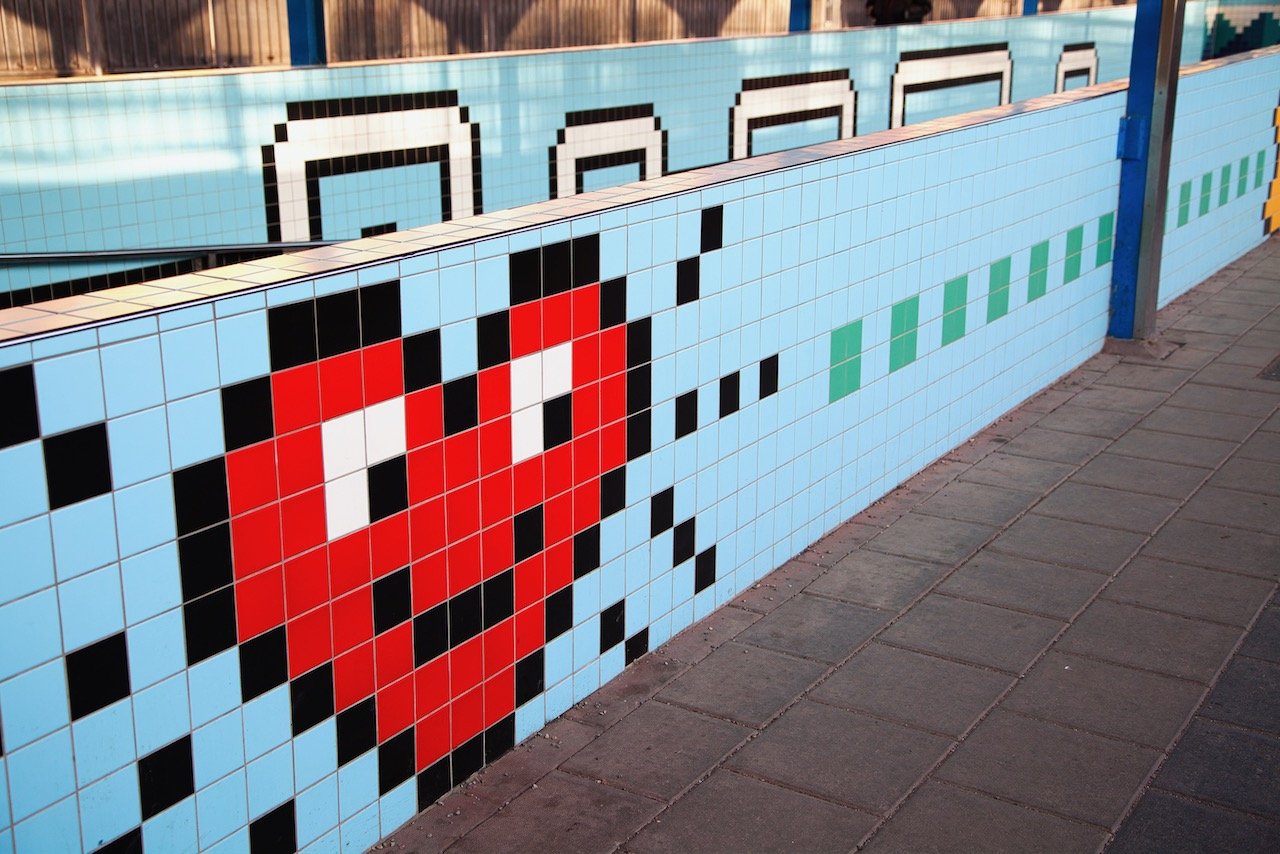
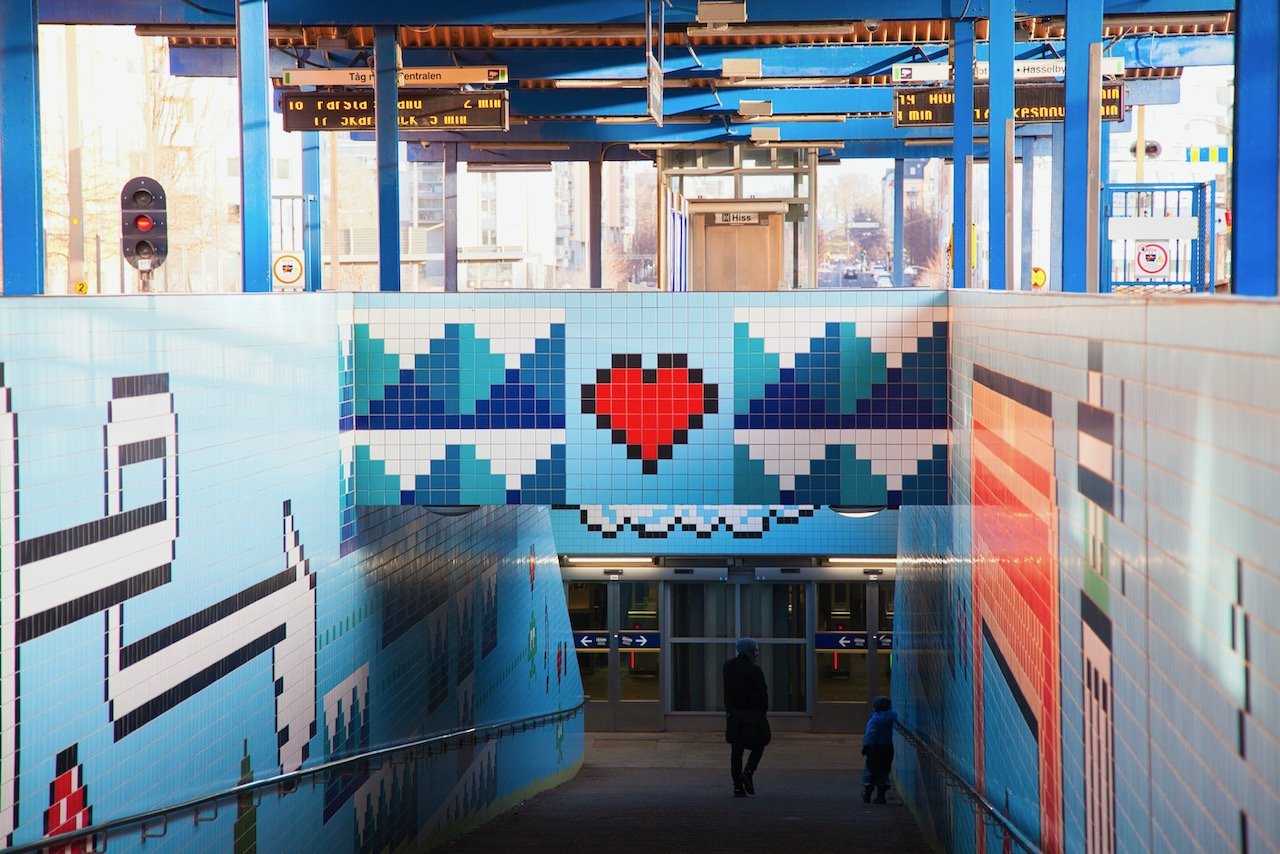
Bagarmossen
This station feels very sterile but the panels give it a splash of color that react to the arrival and departure of trains. The 114 panels and decorations were conceptualized by Swedish painter and sculptor Gert Marcus.
Skarpnäck
The ‘slutstation’ (‘last station’ in english) on this part of the green line is Skarpnäck. This station is most identifiable by the 17 bench sculptures that line the center of the platform. American sculptor and anthropologist Richard Nonas conceptualized the idea.
Citybanan-Odenplan
This work, called ‘Life Line’, was installed by artist David Svensson and sits at the entrance to the commuter train station of Stockholm (not the tunnelbana). The lines themselves were inspired by a CTG scan of his child during birth. Personally, and somewhat in line with the artist’s inspiration, I feel that the tunnelbana and trains of Stockholm represent the arteries of the Swedish capital, delivering people to their destinations, completely interlinked and fueling the city, like a heartbeat pumping blood through a body.








